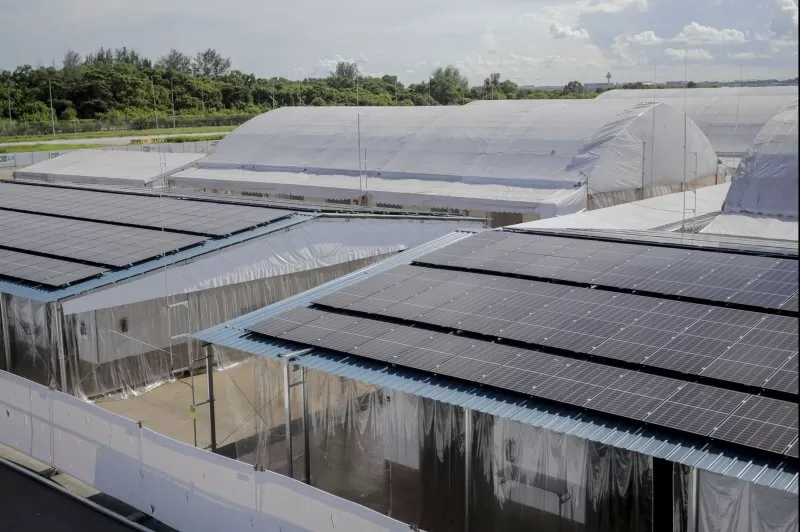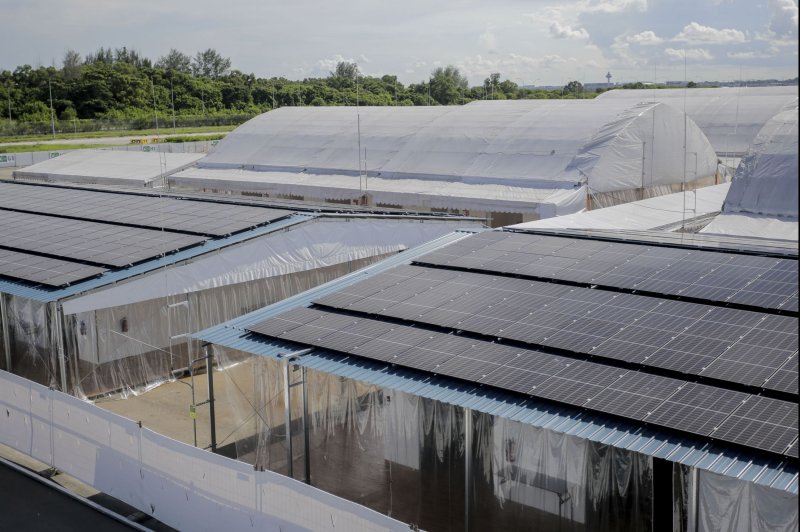An image shows solar panels on the roof of living quarters used to house coronavirus patients at the Changi Exhibition Center Integrated Community Care and Recovery Facility in Singapore, on June 3. 2020. E-waste like solar panels is becoming a larger issue in landfills, a new report says. File Photo by Wallance Woon/EPA-EFE
March 20 (UPI) — Electronic waste around the world is growing five times faster than documented efforts to recycle the material, leaving experts to call for urgent attention to the new source of pollution.
The United Nations’ fourth Global E-waste Monitor reported that 62 million tons of e-waste — including everything from solar panels to sensors and monitors — was generated in 2022 but only 22.3% was collected by verified entities for recycling.
The Global E-waste Monitor said that leaves about $62 billion worth “of recoverable natural resources unaccounted for and increasing pollution risk to communities worldwide.”
The report said that e-waste is increasing by about 2.6 million tons annually and is expected to reach 82 million tons by 2030, or 33% more than what it was in 2022.
“No more than 1% of demand for essential rare earth elements is met by e-waste recycling,” said Kees Balde, lead author of the study, from the United Nations Institute for Training and Research.
“Simply put, business as usual can’t continue. This new report represents an immediate call for greater investment in infrastructure development, more promotion of repair and reuse, capacity building and measures to stop illegal e-waste shipments. The investment would pay for itself in spades.”
The report went on to say that it believes the rate of documented e-waste collection efforts will likely drop to 20% by 2030 because of the rapid growth of e-waste and uneven efforts to recycle it around the world.
The report said the lack of recycling efforts is having an economic impact because 14 million tons of recyclable e-waste filled up landfills in 2022 alone around the globe.
“The Global E-waste Monitor shows that we are currently wasting $91 billion in valuable metals due to insufficient e-waste recycling,” Vanessa Gray, head of the environment and emergency telecommunications division of the ITU Telecommunication Development Bureau.
“We must seize the economic and environmental benefits of proper e-waste management, otherwise, the digital ambitions of our future generations will face significant risks.”
The Global E-waste Monitor reported in 2020 that electronic waste had rapidly made up an increase of the world’s regular waste, up 21% then.

